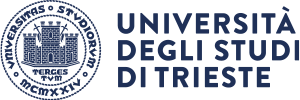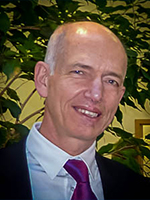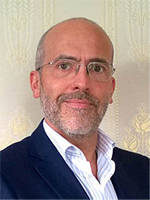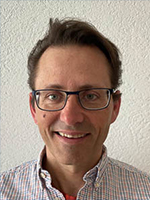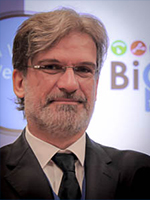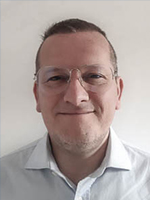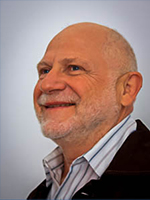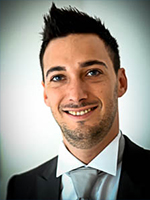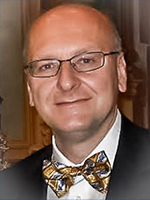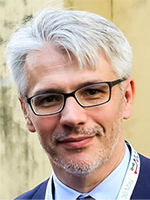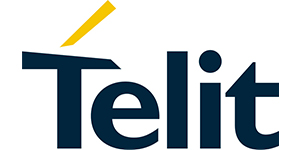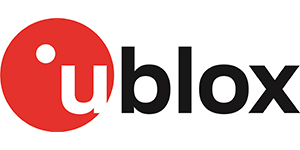SIE2021 PhD School – List of presenters (partial)
|
|
Prof. Fulvio Babich University of Trieste "5G-6G and Internet of Things: an overview" |
Abstract and Short Biography
Abstract
The explosion of wireless communication technology has driven to new Internet access routines, with increasing mobility, pervasiveness and performance leading towards a smart and fully connected society. The outlined evolution of 5G-6G networks anticipates a pervasive wireless scenario, in which a huge number of devices will be connected to enable applications related to Internet of Things (IoT), such as intelligent metering, home and building automation, automotive design and manufacturing, public transportation, public safety and security, automated health and infrastructure management. The feasibility of this scenario builds on an ultra-dense device displacement, millimeter-wave communication adoption, and the massive multiple access. After an overview of the evolution of the 5G-6G related standards, discussing the most important features relevant to the IoT applications, the lecture will focus of modern, massive random access techniques, the capabilities of which should be exploited for making feasible the successful network access of ultra-dense, uncoordinated devices. The presentation will address Interference Cancellation (IC), Packet Repetition (PR), and energy diversity through Non Orthogonal Multiple Access (NOMA), putting into evidence the benefits on performance deriving from efficient access techniques.
Short Biography
Fulvio Babich received the doctoral degree (Laurea), cum laude, in Electrical Engineering, at the University of Trieste, on July 1984. After graduation he was with Telettra at the Research and Development Laboratories, where he was engaged in optical fiber communications. Then he joined Zeltron, where he was a communication system engineer, responsible of the activities within the Eureka and ESPRIT programs. In 1992 he joined the University of Trieste, where he is Full Professor of Wireless Communications and Signals and Systems. His current research interests are in the field of wireless networks and millimeter wave communications. He is involved in channel modeling, multiple access techniques, channel encoding, and error control techniques.
Fulvio Babich is the vice director of the Department of Engineering and Architecture, and he is the Coordinator of the PhD program in Industrial and Information Engineering of the University of Trieste.
|
|
Dr. Roberto Castagno Neste “The Logistics of Ideas: A Technology Based Approach to Strategic IP Asset Management” |
Abstract and Short Biography
Abstract
Open innovation and knowledge-based business models are becoming dominant in the creation of value from innovation and technology. Value chains and ecosystems are increasingly hybrid, as material and immaterial domains are more and more interleaved.
The management of technology and intellectual assets is an increasingly critical aspect of operations for all kinds of businesses, from start-ups to large corporations.
Patents and other forms of Intellectual Property Rights (IPR) have become an essential enabler for a knowledge-based economy, as they describe and establish legal control on technology assets, enabling a true “Logistics of Ideas”.
Short Biography
Roberto Castagno is Head of Intellectual Property at Neste, the world’s largest producer of renewable diesel and renewable jet fuel refined from waste and residues.
Prior to joining Neste, Roberto Castagno was with Nokia between 1999 and 2020 where he held a number of positions in R&D, business development, technology marketing and -since 2007- Intellectual Property.
A citizen of Italy and Finland, Roberto Castagno has served as honorary consul of Italy in Tampere, Finland since 2004 and regularly advises the Italian embassy in Finland on potential cooperation projects in the areas of technology and innovation. He is a lecturer in intellectual and technology assets management at the Faculty of Industrial and Information Management, University of Tampere, and he regularly speaks at conferences and executive training programmes. Roberto Castagno is a member of the advisory board of the Centre for Intellectual Property in Gothenburg.
Roberto Castagno holds a PhD in telecommunications from the Swiss Federal Institute of Technology in Lausanne and a master’s degree in electronic engineering from the University of Trieste, Italy.
|
|
Dr. Daniele Costantini Luna Innovations Inc. “Optical fiber sensing and smart structures" |
Abstract and Short Biography
Abstract
Over the last three decades, optical fibers made their way in our daily life in both communications and sensing applications. Examples of fiber-optic sensing can be found nowadays along the highways to monitor traffic, on bridges and roads for predictive maintenance and safety, on rail tracks and carriages for weight-in-motion and asset monitoring. As a matter of fact, fiber-optics sensors are being more and more adopted in several industries where traditional electrical solutions are failing or do not fit the requirements, for example in harsh environments or for large structures and long distances. Our presentation will review the main fiber-optic sensing technologies and will describe some of the applications. In particular, the measurements systems designed for the high-tech carbon fiber composite structures of the America’s Cup racing yachts and the new San Giorgio highway bridge structure in Genova will be reviewed.
Short Biography
Daniele Costantini received a master’s degree in electrical engineering from the "Università degli Studi di Trieste" in Italy and a PhD in applied optics from the "Swiss Federal Institute of Technology of Lausanne (EPFL)" in Switzerland. He was a member of the Sailing Team Alinghi during the 2007 and 2010 America's Cup campaigns where he developed and implemented fiber-optic structural monitoring solutions and performance development tools. Over the last twenty years, he held roles in engineering, product marketing and business management for several international organisations, contributing to the industrial adoption of fiber-optic sensing in Energy, Transportation, Civil Engineering and Infrastructure applications. He is currently responsible for technical consulting and leading strategic business development at Luna Innovations Inc.
|
|
Prof. Danilo Demarchi Politecnico di Torino "Bio-inspired electronic systems for biomedics and agrifood" |
Abstract and Short Biography
Abstract
Applications are demanding new approaches to electronic systems. The concept of running for obtaining the best performances in terms of speed and dimensions is no more always valid. It is strategic to find new approaches that must have an impact at system level, not on the single parts only: the optimization is done as consequence of the choices related to how the single devices are working, associated to how they interact each other and they transmit the information. The two levels (system and device) are strictly related, and design choices have to be done looking at the system as a global entity to be optimized.
In this seminar is presented an original approach that takes the best from the actual solutions as neuromorphic systems or quasi-digital implementations. The data are spike-based and so, using IR-UWB (Impulse Radio - Ultra WideBand) as transmission channel, this is the best for minimizing complexity and power consumption.
The optimization of the system implementation is bringing great advantages in terms of power consumption and reduction of circuit/architecture complexity, optimizing in a simple way the quality-energy trade-off.
Application of these concepts to IoT devices applied to Robotics, BioMedics and Precision Agriculture will be presented.
Short Biography
Associate Professor at Politecnico di Torino, Department of Electronics and Telecommunications, with the tenures of “Introduction to MEMS and BioMEMS” for Biomedical and Electronics Engineering, of “Design of Microsystems” for Electronics Engineering and Nanotechnologies for ICT, of “Bio-NanoElectronics” for the PhD School in Electronics and Telecommunications and of "Electronics" for the Bachelor Degree in Biomedical Engineering.
Visiting Professor at EPFL Lausanne (2019) and at Tel Aviv University (2018-2021).
Visiting Scientist (August 2018) at MIT and Harvard Medical School for the project SISTER (Smart electronic IoT SysTEms for Rehabilitation sciences).
Author and co-author of 5 patents and more than 250 scientific publications in international journals and peer-reviewed conference proceedings.
Leading the MiNES (Micro&Nano Electronic Systems) Laboratory of Politecnico di Torino and coordinating the Italian Institute of Technology Microelectronics group at Politecnico di Torino (IIT@DET).
Senior Member of IEEE, Member of IEEE Sensors Council, Member of the BioCAS Technical Committee, Associate Editor of IEEE Sensors Journal, of the IEEE Open Journal on Engineering in Medicine and Biology (OJ-EMB) and of the Springer-Nature Journal BioNanoScience.
General Chair of BioCAS (Biomedical Circuits and Systems) Conference in 2017, and founder of FoodCAS Workshop (Circuits and Systems for the Food chain).
|
|
Prof. Maurizio Martina Politecnico di Torino “Approximate computing in IoT systems” |
Abstract and Short Biography
Abstract
IoT systems require to embed complex functions on single nodes, with a very limited power budget.
Taking advantage of the intrinsic redundance available into data, one can trade complexity for accuracy.
This concept has been investigated in the literature at different levels of abstraction: electrical, logical, algorithmic, system, where different ideas can be exploited, ranging from bit truncation to adaptive quantization and data representation.
Digital signal processing applications, in particular image and video processing, are probably the most popular ones to apply approximate computing. However, other applications, such as error correcting codes decoders, artificial intelligence and machine intelligence are suited candidates, which have been studied and addressed in the literature.
The aim of this seminar is show some of the main approaches to exploit the approximate computing paradigm to design IoT nodes, by focusing on different techniques and applications and by showing trade-offs between complexity and accuracy one can achieve.
Short Biography
Maurizio Martina received the M.S. and Ph.D. in electronic engineering from Politecnico di Torino, Italy, in 2000 and 2004, respectively.
He is currently an Associate Professor of the VLSI-Lab group at Politecnico di Torino with the tenures of Digital Electronics and Electronic Systems for the production and distribution.
His research interests include VLSI design and implementation of architectures for digital signal processing, video coding, communications, artificial intelligence, machine learning, cryptography and event-based processing. He has more than 100 scientific publications and holds two patents.
Maurizio Martina is a Senior Member of the IEEE and he is now an Associate Editor of the IEEE Transactions on Circuits and Systems I.
Maurizio Martina is the counselor of the IEEE Student Branch at Politecnico di Torino and a professional member of IEEE HKN.
He is and has been part of different committees for several IEEE conferences, such as BioCAS, NGCAS, PRIME.
Currently, he is the Reference Programme Faculty for the Bachelor and the Master in Electronic Engineering of Politecnico di Torino.
|
|
Prof. Ermanno Pietrosemoli International Centre for Theoretical Physics Fundación EsLaRed, Latin America Networking School “IoT telecommunications overview and emerging satellite solutions” |
Abstract and Short Biography
Abstract
IoT is playing a very important role in the current and evolving electronics landscape. Different telecommunications techniques address the requirements for short, medium or long distance connections, but all share the common requirement of massive deployment, thus imposing low cost and low power consumption in most deployed devices.
Traditionally, satellite solutions have been used to connect base stations or gateways in places not reached by the optical fiber infrastructure. The emergence of newer satellite technologies is also opening the possibility of directly connecting end-user devices to a gateway or base station in the sky. We will describe both the traditional IoT telecommunications solutions as well as the upcoming ones based on satellites.
Short Biography
Ermanno Pietrosemoli was a professor of telecommunications at the Universidad de los Andes in Venezuela for 30 years. He is one of the founders of Escuela Latinoamericana de Redes (EsLaRed), an organization that has been promoting ICT in Latin America since 1992, and is currently its President. He has also been a consultant in several public and private organizations, and since 2010 is a full-time researcher at the Telecommunications/ICT4D Laboratory in the International Centre for Theoretical Physics (ICTP) of Trieste. He has taught courses and performed deployments of wireless data communications in 41 countries. His research interests are in affordable telecommunications systems and IoT. Ermanno has published many papers and is one of the authors of the book Wireless Networks in the Developing World and in 2017 he was inducted in the Internet Hall of fame by the Internet Society.
|
|
Prof. Davide Rossi University of Bologna “Digital Computing Platforms for Near-Sensor Processing at the Extreme Edge of the IoT” |
Abstract and Short Biography
Abstract
The “internet of everything” envisions trillions of connected objects loaded with high-bandwidth sensors requiring massive amounts of local signal processing, fusion, pattern extraction and classification. While silicon access cost is naturally decreasing due to the twilight of the Moore’s law, the access to hardware IPs still represents a huge barrier for innovative start-ups and companies approaching the market of IoT. In this context, the recent growth of high-quality open source hardware IPs represents a promising way to surpass this barrier, paving the way for a number of exciting applications of open-source electronics. In this talk, I will describe the evolution of the digital computing platforms for Internet of Things and near-sensor processing with focus on the open-source Parallel-Ultra-Low-Power (PULP) platform, as well as opportunities and challenges for next generation open source computing systems.
Short Biography
Davide Rossi, received the PhD from the University of Bologna, Italy, in 2012 where he currently holds an assistant professor position. His research interests focus on energy efficient digital architectures in the domain of heterogeneous and reconfigurable multi and many-core systems on a chip. This includes architectures, design implementation strategies, and runtime support to address performance, energy efficiency, and reliability issues of both high end embedded platforms and ultra-low-power computing platforms targeting the IoT domain. In these fields he has published more than 100 papers in international peer-reviewed conferences and journals. He is recipient of Donald O. Pederson Best Paper Award 2018, - 2020 IEEE Transactions on Circuits and Systems Darlington Best Paper Award, 2020 IEEE Transactions on Very Large Scale Integration Systems Prize Paper Award.
|
|
Prof Massimo Ruo Roch Politecnico di Torino “Low power techniques for IoT & Intelligent Distributed Systems” |
Abstract and Short Biography
Abstract
The steep increase of deployment of IoT devices, in a very different application fields, highlights technology weaknesses requiring the adoption of specific countermeasures.
The first challenge is an as high as possible power consumption reduction, as IoT devices must often be powered by energy harvesters. This result can be obtained only with a vertical approach, starting from device technology, up to firmware, power supply, communication, and overall system architecture, which must be considered as a whole, and not as separated research fields.
The second challenge is the bandwidth availability on the network. Due to the forecast number of IoT devices in the next years, and the huge amount of data which need to be processed, there is the need to locally preprocess the data, in the devices, but also along the overall communication hierarchy, to prune data traffic.
In this course, state-of-the-art design approaches will be presented, together with advantages and common pitfalls.
Short Biography
Massimo Ruo Roch received the M.S and Ph.D. degrees in electrical engineering from the Politecnico di Torino, Italy, in 1989 and 1993, respectively.
He is currently an Assistant Professor from the VLSI-Lab Group, Politecnico di Torino. His research interests include VLSI design and implementation of architectures for digital signal processing, communications, embedded systems design, smart systems with distributed intelligence, logic in memory architectures, and cad tools for nanotechnology based architectures. He is co-author of more then 60 papers, and co-inventor of 4 patents.
|
|
Prof. Gianluca Setti Politecnico di Torino "Compressed Sensing for IoT: Theory, Architectures and Applications" |
Abstract and Short Biography
Abstract
Compressive Sensing is an acquisition technique which relies on the sparsity of the underlying signals, to enable sampling below the classical Nyquist rate. To do so, the signals must be acquired in an incoherent way with respect to the sparsity basis, which is classically obtained in practice by acquiring the signal through projection on a random PAM signal with i.i.d. symbols.
We first show that advantages with respect to the above “classical” compressive sensing approach can be achieved by exploiting the fact that, while sparsity is not under a system designer’s control, incoherence is, and therefore flexibility and creativity in implementing compressed sensing systems rely on the strategic design and control of incoherence. To accomplish this, we then assume that the signals to be acquired are not only sparse, but also localized, e.g. for nearly all practical applications, the signals of interest preferentially occupy a given subspace (for instance they are all low-pass or high-pass in the frequency domain). We show how, for localized signals, the acquisition sequences can be designed to maximize their “rakeness,” that is, to maximize their capability to collect the energy of the samples during the acquisition phase and increase by several dBs the average SNR achieved in signal reconstruction.
We will then describe the design in a 0.18um CMOS technology of the most popular architecture for implementing A/D converters based on compressive sensing, namely the Random Modulation Pre-Integration (RMPI). We will show that the direct circuit implementation of the classical acquisition scheme exploiting i.i.d sequences leads to a highly suboptimal solution, and one needs therefore to follow a synergetic design between algorithm-circuit-system. We will show how the use of rakeness-based CS acquisition sequences can reduce the complexity of the implemented A/D from 16 to 8 stages for processing ECG signals and from 64 to 24 for EMG ones. Furthermore, rakeness-derived sequences also eliminate the necessity for pre- or post-acquisition filtering stages intended to suppress high frequency artifacts and 60-Hz power-line noise interference.
Finally, we will show how the use of CS guarantee some level of privacy in information transmission, which makes the CS signal acquisition paradigm even more suitable for applications in the area of Body Area Networks and Internet of Things.
Short Biography
Gianluca Setti received a Ph.D. degree in Electronic and Computer Engineering from the University of Bologna in 1997.From 1997 to 2017 he was with the School of Engineering at the University of Ferrara. Since December 2017 he is a Professor of Electronics for Signal and Data Processing at the Department of Electronics and Telecommunications (DET) of Politecnico di Torino, Italy. Since 2002 is also a permanent (in kind) faculty member of ARCES, University of Bologna.
Dr. Setti received the 1998 Caianiello prize for the best Italian Ph.D. thesis on Neural Networks. He is also recipient of the 2013 IEEE CAS Society Meritorious Service Award and co-recipient of the 2004 IEEE CAS Society Darlington Award, of the 2013 IEEE CAS Society Guillemin-Cauer Award, the 2019 IEEE Transactions on Biomedical Circuits and Systems best paper award, as well as of the best paper award at ECCTD2005, and the best student paper award at EMCZurich2005, ISCAS2011, PRIME2019 and EMCCOMPO 2019.
He was the Editor-in-Chief of the IEEE Transactions on Circuits and Systems - Part II (2006-2007), the IEEE Transactions on Circuits and Systems - Part I (2008-2009), and, since 2019, he is serving as the first non US Editor-in-Chief of the Proceedings of the IEEE, the flagship journal of the Institute.
Dr. Setti was the Technical Program Co-Chair of NDES2000 (Catania), ISCAS2007 (New Orleans), ISCAS2008 (Seattle), ICECS2012 (Seville), BioCAS2013 (Rotterdam) as well as the General Co-Chair of NOLTA2006 (Bologna) and ISCAS2018 (Florence).
He was a Distinguished Lecturer (2004-2005 and 2014-2015) of the IEEE CAS Society, as well as a member of its Board of Governors (2005-2008), and served as the 2010 CASS President. He held several other volunteer positions for the IEEE and in 2013-2014 he was the first non-North-American Vice President of the IEEE for Publication Services and Products.
He is also a Fellow of the IEEE.
He authored over 300 publications and edited/authored 4 books in the areas of nonlinear circuits, neural networks and machine learning algorithms, statistical signal processing, electromagnetic compatibility, compressive sensing, biomedical circuits and systems, power electronics, design and implementation of IoT nodes.
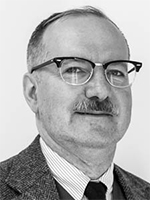 |
Prof. Lorenzo Vangelista University of Padova “Low Power Wide Area Networks in Unlicensed Spectrum” |
Abstract and Short Biography
Abstract
Low Power Wide Area Networks (LPWANs) is a paradigm gaining more and more momentum for massive IoT applications. In the talk, the different solutions for LPWANs will be briefly illustrated, focusing in particular on the systems, like LoRaWAN, working in unlicensed bands. The constraints put by the regulations will also be illustrated, with specific attention to the European and Italian cases. The talk will touch not only the radio interface but the organization of the “core network” for these networks will be considered, again with specific focus on the LoRaWAN systems. The application of satellite communications for LPWANs will conclude the talk.
Short Biography
Lorenzo Vangelista received the Laurea and Ph.D. degrees in electrical and telecommunication engineering from the University of Padova, Padova, Italy, in 1992 and 1995, respectively.
He subsequently joined the Transmission and Optical Technology Department, CSELT, Torino, Italy. From December 1996 to January 2002, he was with Telit Mobile Terminals, Trieste, Italy, and then, until May 2003, he was with Microcell A/S, Copenaghen, Denmark. In July 2003, he joined the Worldwide Organization of Infineon Technologies as Program Manager. Since October 2006, he has been an Associate Professor of telecommunication with the Department of Information Engineering, Padova University. His research interests include signal theory, multicarrier modulation techniques, cellular networks and Internet of Things connectivity with special focus on Low Power Wide Area Networks.
 |
DAVE Embedded Systems IoT and cybersecurity issues: a real-world case in building automation” |
Abstract and Short Company Presentation
Abstract
As known, one of the key aspects of IoT systems is cybersecurity. By definition, these systems are subject to many different attacks perpetrated by individuals, companies, or even countries.
Moreover, Cybersecurity is not just a "feature" of a product, but a process that spans on all product lifetime: starting from the design, impacting in production and on-field deployment and having drawbacks also in maintenance, service, and even during product disposal.
This lesson deals with a real-world scenario referring to the world of building automation. Specifically, the system under consideration consists of several devices, which make use of two buses for the connection: Ethernet and a proprietary version of CNX. DAVE Embedded Systems designed two devices for this network: an Android-based terminal and a Linux-powered Ethernet/CNX gateway.
The lesson illustrates the techniques implemented to fulfill the security specifications in terms of cybersecurity for these two devices: things that can be shared between designs and how to adapt the same cybersecurity requirement in different hardware and software scenarios.
Short Company Presentation
DAVE Embedded Systems is a well-established and constantly growing Italian company, focused on designing, manufacturing embedded systems solutions. DAVE Embedded Systems provides solutions starting from System On Module (SoM) based on the latest technologies (e.g. Multi-Core ARM Cortex, PowerPC and X86 based on NXP, Xilinx, ST Microelectronics and Texas Instruments) to the concept and design of a complete embedded solution. Principal sectors are Industrial Automation, Healthcare, Home Automation, Railways/Transportation, Automotive and Defence/Aerospace.
Design an embedded solution requires knowing about hardware and software. DAVE Embedded Systems provides a huge portfolio of services including: Board Support Package tailoring, custom hardware designs, mechanical design and integration. Moreover, on the application side, DAVE Embedded Systems is able to provide Uzser Experience solutions, Internet of Things on the edge and on the cloud solutions, and, last but not least, Machine Learning algorithm, training design, and deployment.
DAVE Embedded Systems has its manufacturing facility where products are prepared for customers according to ISO 9001 and ISO 13485 standards including special services such us SnPb soldering process for avionics and sealing/coating of BGA components.
DAVE Embedded Systems: your embedded solution partner.
|
|
Telit “IoT product life cycle: market analysis and product requirements; feasibility and execution; technical support” |
Abstract and Short Company Presentation
Abstract
From market requirements to the execution: the session describes how a IoT product is conceived starting from the different source of requirements. Requirements analyzed range from carrier requirements, specific segment needs and take also into consideration the technology landscape.
The R&D feasibility phase evaluates the requirements and generates the output in response of the product requirements, reporting the outcome of the feasibility in regards of committed or not committed features, including the necessary budget and resources. The business case is then the main tollgate to enter into execution phase.
Execution phase consists in the development of the product, including all its aspects: hardware, software, validation, certification, till the new product introduction and mass production phases.
Go to market phase is also explained as parallel activity along with the execution phase.
Last, some outlines about the application engineering and technical support as part of the value proposition of the produc
Short Company Presentation
Telit (AIM: TCM), is a global leader in Internet of Things (IoT) enablement, with an extensive portfolio of wireless connectivity modules, software platforms and global IoT connectivity services, empowering hundreds of millions of connected ‘things’ to date, and trusted by thousands of direct and indirect customers, globally. With over two decades of IoT innovation experience, Telit continues to redefine the boundaries of digital business, by delivering secure, integrated end-to-end IoT solutions for many of the world’s largest brands, including enterprises, OEMs, system integrators and service providers across all industries, enabling them to simplify, connect and manage IoT at any scale.
|
|
u-blox “IoT product life cycle: the role of operations from design to customer” |
Abstract and Short Company Presentation
Abstract
The term operation is used to identify the set of activities to turn the Research & Development into reality.
Every Product and Service offered to the final customer is the coordinated result of various teams among which Design, Logistic, Quality.
A tight coordination of these teams can finalize a successful product leveraging a competitive advantage, its absence can definitely affect its value.
Suppliers and components selection, Product qualification and Customer support, Production monitoring and optimization, are key steps for a successful and sustainable business.
Short Company Presentation
u-blox is a global technology company providing state-of-the-art, secure, and reliable solutions for wireless connectivity, positioning, and communication. Our unique silicon-to-cloud offering enables customers to collect and to encrypt geo-tagged data at the endpoint and transfer it to their enterprise system where it can be decrypted.
We offer easy-to-use core components and data services, all supported worldwide by our local teams of experts.
With a broad portfolio of chips, modules, and secure data services and connectivity, u-blox is uniquely positioned to empower its customers to develop innovative and reliable solutions for the IoT, quickly and cost effectively. Founded in 1997 as a spin-off from Swiss Federal Institute of Technology (ETH) u-blox (SIX:UBXN) has its Headquarter in Thalwil (Zurich) and currently employs about 1200+ people in 22 different countries in Europe, Asia and in the Americas.
The only Italian R&D Centre is in Sgonico (Trieste) and employs about 160 electronics, computer science and telecommunications engineers. We offer a wide range of career opportunities worldwide in Research & Development, Quality, Sales, Customer support, Logistics/Sourcing and HR/Finance.
